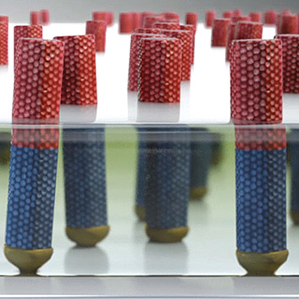Recently, Sol Voltaics from Sweden announced that using nanowire inks could boost the efficiency of solar panels by up to 25% without significantly increasing production costs, making solar energy more affordable. This breakthrough could revolutionize the renewable energy sector. The company is working on a new method to extract nanowires from gallium arsenide (GaAs), a material long used in high-performance solar cells. While GaAs offers superior properties compared to silicon, it's also much more expensive. Sol Voltaics aims to reduce the amount of this costly material needed by suspending nanowires in liquid and applying them in a way that maximizes their effectiveness. By arranging the nanowires vertically—similar to the blades of grass or a beard—the company claims to generate the same amount of electricity as traditional methods, but with far less gallium arsenide. This technique can be applied to surfaces like glass, enabling the creation of new solar panels or enhancing existing ones. David Epstein, CEO of Sol Voltaics, explained, “The amount of material needed to cover one square meter is less than a gram.†This means that even small quantities of the nanowire ink can have a significant impact on power output. According to Epstein, applying this technology to existing solar panels could increase their power output. For example, a 200-watt panel could effectively become a 250-watt panel after the treatment. Although initial costs are involved, the potential savings and performance gains make it a worthwhile investment. Sol Voltaics was founded by Professor Lund Samuelson, a renowned nanotechnology expert at Lund University in Sweden. His research focuses on a process called "aerotaxy," which differs from traditional methods used in chip manufacturing. Instead of depositing materials on fixed surfaces like silicon wafers, aerotaxy involves forming nanowires continuously on gold nanoparticles as they move through a gas-filled chamber. These nanowires are then collected and stored in a liquid form suitable for use in inkjet printing. While Sol Voltaics doesn’t manufacture solar panels itself, the company plans to set up factories to produce and sell these nanowire inks to existing manufacturers, helping them improve the efficiency of their products. Epstein described the product as “ink†and said, “We will be an ink factory.†So far, Sol Voltaics has demonstrated solar cells made from indium phosphide nanowires. The company expects to showcase GaAs-based solar cells by the end of 2013 and begin large-scale commercial production in 2016. To date, the company has raised $11 million from Swedish investors and aims to raise another $10–20 million this year. It estimates that at least $50 million will be needed to start mass production, signaling its long-term vision for the future of solar technology. Taizhou TS HARDWARE Co., Ltd , https://www.shuwengroup.com